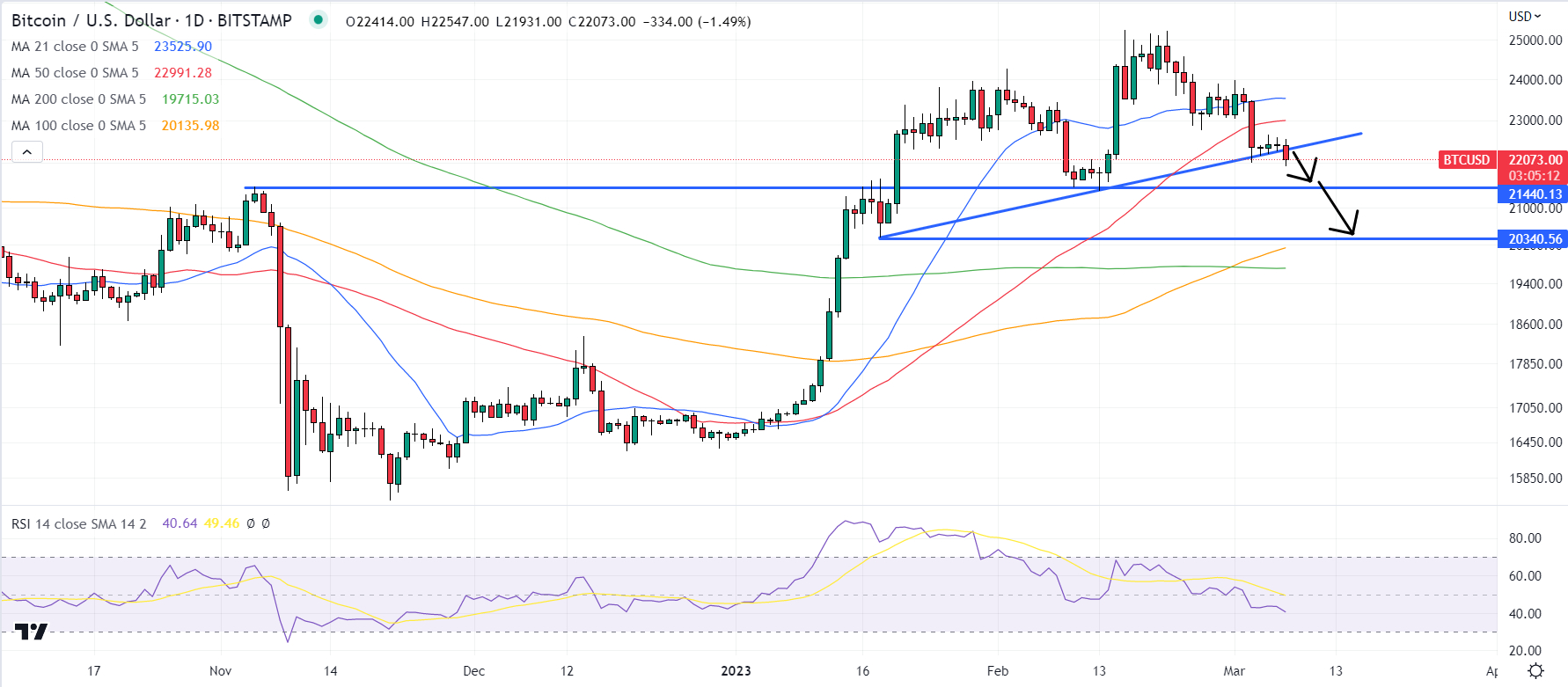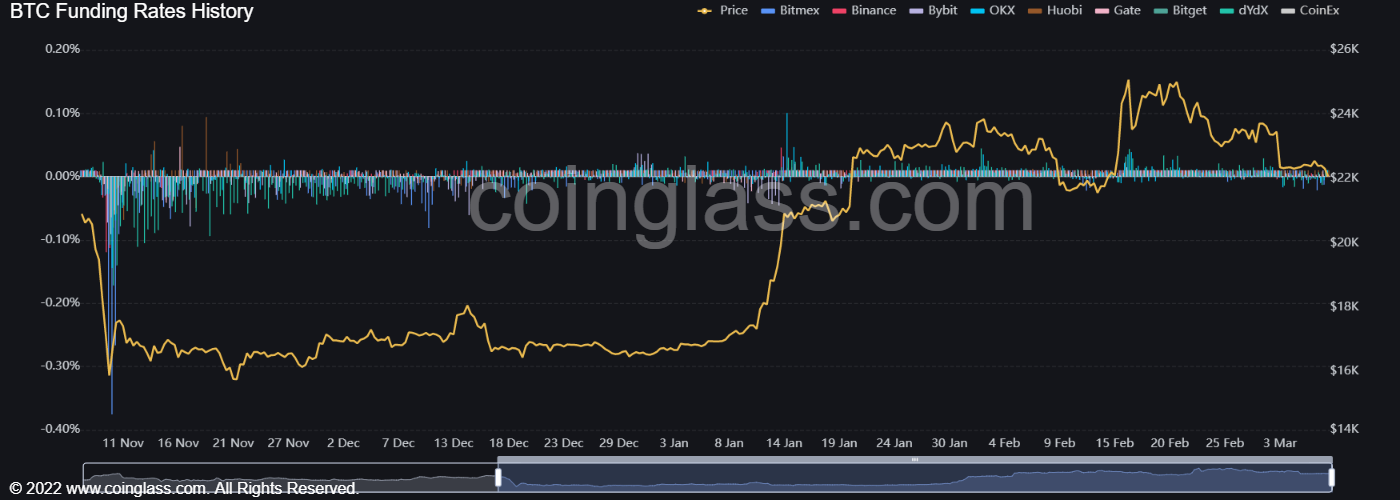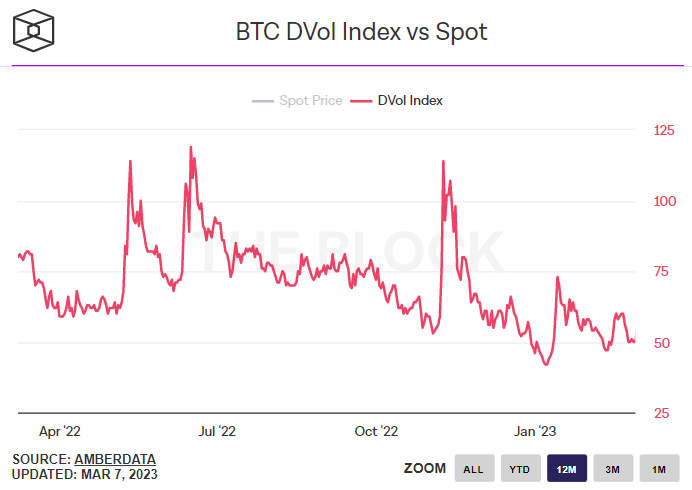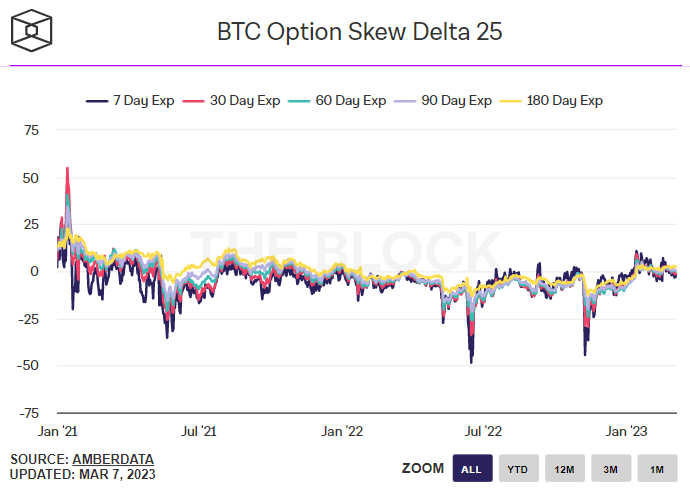Cryptocurrency markets have weakened on Tuesday following comments from US Federal Reserve Chairman Jerome Powell which hinted at a possible increase of interest rates higher and faster than previously assumed. Bitcoin has taken a hit, last trading just above $22,000 after its first dip beneath that level since mid-February earlier in the session, down about 1.5%.
Technicians have pointed out that this means Bitcoin has now broken below an uptrend that had been in play since mid-January, leaving the door open for a possible retest of February’s lows in the $23,000s and even the 18th January low in the $20,300s.

The 14-Day Relative Strength Index (RSI) also suggests that there could be further downside before Bitcoin reaches a point of being oversold. Bitcoin’s RSI was last around 40, with a score below 30 seen as signifying that market conditions have become overly bearish.
Some bears think that a retest of Bitcoin’s 200-Day Moving Average and Realized Price (the average price at which each Bitcoin last moved on the blockchain) in the $19,700-800 region is a possibility. Crypto futures traders have become more bearish, with the futures margin funding rates having turned negative in recent days to a degree not seen since early January.

The possibilities of a higher and faster interest rate rise will depend on the outcome of this week’s US jobs data. Crypto traders will be paying close attention to this, praying that the data doesn’t show too strong a labor market. If it does, this could trigger a downward spiral in the crypto market.
Options Markets Show Low Volatility Risk
Despite fears that the hawkish comments from Powell could lead to a huge collapse in prices, Bitcoin options markets continue to show that risks are minimal. For example, Deribit’s Bitcoin Volatility Index (DVOL) has remained unchanged at 51, still not too far above January’s record lows of 42, according to data presented by The Block. Deribit is the dominant exchange for cryptocurrency derivatives.

The 25% delta skew of Bitcoin options expiring in 7, 30, 60, 90 and 180 days are largely unchanged, within recent ranges and, for the most part, still close to zero, indicating a fairly neutral market positioning bias. The 25% delta skew for shorter-term expiries like the 7 and 30-day are slightly negative at around -1.5, while the 180-day is at around 2.4, implying that the market is a little more optimistic on the medium to long-term Bitcoin price outlook than in the short-term.

The 25% delta options skew is a popularly monitored proxy for the degree to which trading desks are over or undercharging for upside or downside protection via the put and call options they are selling to investors. Put options give an investor the right but not the obligation to sell an asset at a predetermined price, while a call option gives an investor the right but not the obligation to buy an asset at a predetermined price.
A 25% delta options skew above 0 suggests that desks are charging more for equivalent call options versus puts. This implies there is stronger demand for calls versus puts, which can be interpreted as a bullish sign as investors are more eager to secure protection

